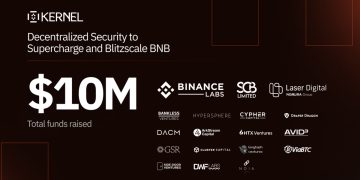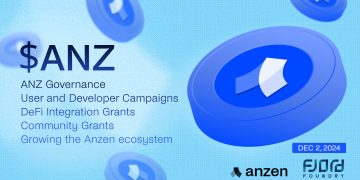An intent-centric interoperability protocol, Owlto Finance is moving ahead with its visionary mission of ‘Bridging the World with AI Agent.’
This ambitious vision is matched by equally impressive achievements, as the platform quickly ascended to the No. 1 bridge within a year, attracting two million users across more than 200 countries/regions.
But what exactly is Owlto’s original proposal, and what does it aim to solve? We will discuss these aspects in the coming segments.
Owlto Finance: The Genesis
As transaction volume and user traffic continue to grow in the Ethereum ecosystem, the network that once helped build the decentralized world is becoming increasingly congested and costly, marked by high transaction fees.
Addressing the issue, Layer 2 solutions and Rollups emerged, found to have great potential in improving the user experience by migrating transactions and smart contracts from the Ethereum mainnet to the Layer 2 rollup network, achieving high throughput, low cost, and better user experience.
As the system gained more traction, more users became keen to conduct cross-chain operations in cross-chain environments. Addressing these industry situations came Owlto Finance, a decentralized Cross-Rollup bridge designed specifically for transferring local assets within the Ethereum network. It responded well to user needs and efficiently solved many industry pain points.
It efficiently evolved over time, increasingly focusing on multi-ecosystem interoperability—a robust sign of maturity from its ETH L2 origin. It is active in BTC, ETH, and Sol ecosystems and is in the process of integrating more.
Already a leader in the ecosystems where it is active, Owlto supports 46 networks, one of few bridges in the market to support so many chains.
Owlto Core Solution: Increased Interoperability
High congestion, low throughput, and increased transaction fees are the trinities that have hindered the growth of the Ethereum ecosystem. Several Layer 2 rollup scaling solutions have emerged to address these challenges, including Arbitrum One, Arbitrum Nova, Optimism, zkSync, StarkNet, Linea, Base, Scroll, Taiko, Polygon zkEVM, opBNB, and BNB Chain.
With the growth of these solutions comes the need for a solution that will cater to the high demands for asset transfers. Users will require a user-friendly, safe, and inexpensive asset transfer tool—a Cross-Rollup bridge product. Owlto fills this gap and offers a much-needed avenue for roll-ups to make transfers directly to each other.
One of its key interventions involved empowering industry participants with flexibility: for small amount transactions (less than 1 ETH), it utilized liquidity solutions that enabled fast bridging transactions with both efficiency and cost-effectiveness. For larger transactions (more than 1 ETH), it integrated Circle’s CCTP and Chainlink’s CCIP to ensure the highest level of decentralization and security.
Furthermore, Owlto is developing a settlement network based on the EigenLayer called Owlto Instant Interoperability Protocol (OIIP), which utilizes EigenLayer’s restaking and Ethereum’s POS mechanisms to guarantee asset security and decentralization.
With increased interoperability, Owlto can efficiently handle high throughput, reduce transaction fees, and improve user experience. These benefits would not only apply to DeFi applications but also to NFT markets, DEXs, cross-chain asset transfers, games, and the Metaverse.
Owlto Differentiators: Ai-Backed Efficiency at Low-Cost
While an emerging market always has space for multiple solutions in the same domain, only a few can cut the chase in the long run by offering something technologically superior and efficiently cost-effective. Owlto delivers on these fronts. It is the first Cross-Chain Protocol to use AI Agents to optimize product experiences, improve fund transfer paths, enhance product experience, and help users understand complex blockchain logic to make the best decisions.
All its smart contracts are open-source, so it conducts regular third-party assessments and consistently collaborates with security firms to enhance protocol security. It boasts an “AA” rating on CertiK, one of the most prestigious and credible audit ratings in Web3, and maintains the same rating on several blockchains, such as Solana and Optimism. All products are fully transferable, and 99.9% of the time, they are controlled by the user’s account.
Owlto efficiently conducts Layer2-to-Layer2 cross-chain transactions within just 15-30 seconds, significantly enhancing transaction speeds by bypassing Layer 1 confirmations. This capability not only showcases its technical superiority but also exemplifies its commitment to rapid network support and expansion, which is crucial for meeting user demands. In terms of user experience, it continuously betters itself by taking user feedback that it obtains by conducting polls on X(Twitter) and Discord into account.
In summary, Owlto stands apart from the rest by offering advantages in efficiency, security, scalability, performance, cost-benefit, and credibility. The protocol has the power to encourage and onboard more applications and inject more usability into the Ethereum, Bitcoin, and Solana ecosystems.
Owlto Traction: Early Signs of Success
Owlto Finance’s uniqueness has helped it gain traction from its very early days. It has more than 300,000 followers on X (the erstwhile Twitter) and has already catered to a user base of more than 2 million, with an active daily user base of 46,000. The total number of transactions has surpassed 5.7 million.
In its latest strategic funding round, Owlto raised US$8 million, and a host of leading backers joined the round, including leading Web3 Venture institutions Bixin Ventures and CE Innovation Capital, followed by other backers like Presto, Hailstone Labs, Skyland Ventures, Blocore, SNZ Capital, BESTO, Kroma, Coinseeker.co, Stratified Capital, X21 Digital, Maxx Capital, Incubate Fund, GSR, ChainCatcher, etc.
All these numbers—more than stats describing success—validate Owlto’s credibility and benefits. With increasing traction, Owlto will facilitate a world with optimum scalability and flexibility in quick and seamless asset transfers between different networks.























